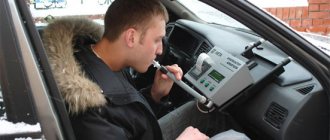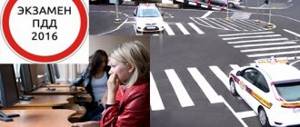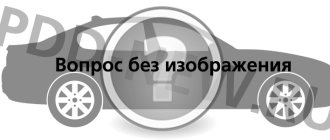First aid is provided in three stages: emergency assistance in case of a severe health threat, calling a car with medical personnel, transportation to a medical facility.
Dear readers! Our articles talk about typical ways to resolve legal issues, but each case is unique. If you want to find out how to solve your particular problem, please use the online consultant form on the right or call. It's fast and free!
If you don't get confused in a stressful situation, you can save a person's life. In this article we will analyze in detail how to behave if a person witnesses or takes part in a serious emergency situation with victims.
Algorithm of actions before calling an ambulance
- Assess the condition of the victim in the accident.
- If something puts pressure on a participant in an accident or negatively affects the body, release him from the current conditions.
- Check for damage to internal organs and, if necessary, maintain their functions until doctors arrive.
- Calling an ambulance. If this is not possible, you need to rescue the victim yourself and take him to the nearest hospital.
According to statistics, people involved in road accidents die due to medical assistance not provided on time in 70% of cases. That is why it is so important not to pass by, to know what and how to do correctly.
It is worth noting that the criminal code has an article that states that the punishment for leaving someone in trouble is a fine of 40 thousand rubles or arrest for up to four months.
How to call an ambulance correctly and indicate the important points of an accident?
You need to call a medical team as soon as possible if people were injured in an accident. It’s much easier to do this in the city, because on every corner there are landmarks with street names and house numbers. What about on the track? It's good if you are not alone in a difficult situation.
Then another eyewitness can provide assistance at this moment, while another tries to navigate the scene of events, and then call the medical rescue service.
The traditional ambulance number, which is familiar to every child since kindergarten, is 03. However, you won’t be able to call this way from a mobile phone; it differs for each operator, for example, 003 or 030.
It’s worth finding out in advance and recording it in the phone book. By calling “0911” you can call any brigade (medical, fire, police) from any communication device.
As soon as the call goes through and the employee picks up the phone, you need to say the following information as clearly and quickly as possible:
- The number of victims (this is important, because each person is supposed to have a separate car).
- Indicate gender, approximate age.
- Describe the situation in general terms (not how the accident happened, but what injuries the victim has).
- Indicate landmarks (address).
- Leave your contact information so that the team can be contacted if necessary.
- Inform that a rescue service will be required in the event that the participants in an accident are trapped in a car and there is no way to evacuate them independently.
If an ambulance cannot immediately arrive at the scene, it is necessary to organize transportation of the victim. Drive it yourself or catch a car.
Traffic rules of the Russian Federation 2021
STSI EXAMINATION TICKETS for categories “A”, “B”, “M” and subcategories “A1”, “B1”
on the topic Procedure for providing first aid to persons injured in an accident
TICKET 2. Question 20
| In what cases should cardiopulmonary resuscitation of the victim be started? Ticket 2, question 20. |
The correct answer is third. |
Comment: Cardiopulmonary resuscitation is carried out only if the victim has no signs of life. Signs of life are the presence of consciousness, pulse and breathing. If at least one of the signs of life is present, resuscitation is pointless, and its implementation can cause harm to a person’s health.
TICKET 3. Question 20
| What information must be provided to the dispatcher to call an ambulance in case of a road traffic accident (RTA)? Ticket 3, question 20. |
The correct answer is third. |
Comment: When calling an ambulance, it is necessary to provide information that will ensure the speedy arrival of doctors at the scene of an accident and the provision of the most effective assistance to victims. To do this, it is necessary to indicate as accurately as possible where the accident occurred and set clear landmarks on the ground. Reporting the number and general condition of the victims will allow you to make the right decision about how many ambulance teams and what qualifications should be sent to the scene of the incident.
TICKET 4. Question 20
| How should you place your hands on the victim's chest when performing cardiopulmonary resuscitation? Ticket 4, question 20. |
The correct answer is the second one. |
Comment: The human heart is located in the middle of the chest: behind the sternum, 2 fingers above its xiphoid process (the triangular bone with which the sternum ends). Performing chest compressions requires a lot of physical effort, so it is performed with both hands, which are placed one on top of the other. To prevent fractures of the sternum and ribs, these efforts should be directed along the axis of the sternum (thumbs pointing to the chin and abdomen).
TICKET 7. Question 20
| What is the optimal position for a conscious victim if a spinal injury is suspected? Ticket 7, question 20. |
The correct answer is the second one. |
Comment: The greatest danger in spinal injuries is the threat of damage to the spinal cord, which can occur with the slightest movement of the spinal column. Therefore, a victim with such an injury should absolutely not be moved or turned. To avoid damage to the cervical spine when moving the head, the neck must be secured with a homemade splint. If there is no splint, the neck is wrapped in a thick layer of cloth or a long scarf.
TICKET 8. Question 20
| How to provide first aid for frostbite and hypothermia? Ticket 8, question 20. |
The correct answer is the second one. |
Comment: In case of frostbite and hypothermia, it is necessary to minimize heat loss from the surface of the victim’s body. For this purpose, the affected areas of the body are insulated and immobilized, the victim is wrapped in warm clothes or a blanket, given a warm drink, and moved to a warm room. Giving alcohol in the cold is strictly prohibited, since first of all it dilates the blood vessels of the skin, increasing the release of heat by the body.
TICKET 10. Question 20
| What is the first aid for a traumatic brain injury accompanied by a wound to the scalp? Ticket 10, question 20. |
The correct answer is the first one. |
Comment: To stop bleeding when the head is wounded, a sterile pressure bandage is applied to the wound, and cold is applied to the wound area. A cervical splint immobilizes the victim’s head from unwanted movements. Since with head injuries there is always a suspicion of a concussion or contusion of the brain, which is often accompanied by nausea and vomiting, the victim should lie on his side.
TICKET 12. Question 20
| How should the victim be positioned if he loses consciousness and has breathing and circulation to provide first aid? Ticket 12, question 20. |
The correct answer is third. |
Comment: An unconscious victim should always lie on his side so that the root of the tongue, sunk into the larynx, does not block the airway and cause suffocation. The “recovery” position provides that the victim’s legs are bent at the knees and slightly pressed to the ground, and the back of his hand is placed under his cheek.
TICKET 13. Question 20
| For how long can a hemostatic tourniquet be applied? Ticket 13, question 20. |
The correct answer is the second one. |
Comment: A hemostatic tourniquet temporarily deprives the tissues located below the site of its application of normal blood supply, which leads to their necrosis. In the cold season, when blood vessels are already narrowed, this can happen faster. Therefore, in winter the tourniquet should be applied for a shorter period than in summer.
TICKET 15. Question 20
| What kind of injuries to the victim may be indicated by the “frog” pose (legs are bent at the knees and spread apart, and the feet are turned with the soles facing each other) and what first aid should be provided? Ticket 15, question 20. |
The correct answer is the second one. |
Comment: The “frog” pose is not related to injuries to the lower leg, ankle and foot - it is typical for injuries to the pelvis, lower spine and abdominal cavity. These injuries pose a great danger to human life and health, so they should not be aggravated by trying to change the position of the victim. In such cases, splints are not applied. First aid consists of fixing the “frog” pose, for which you need to place soft tissue rolls under your knees. It is also advisable to apply cold to the victim's stomach.
TICKET 16. Question 20
| How to determine whether a victim who has lost consciousness is breathing? Ticket 16, question 20. |
The correct answer is the second one. |
Comment: In a unconscious victim, breathing may not be detected due to the retraction of the tongue, blocking the flow of air into the respiratory tract. Therefore, to determine the presence of breathing, it is first necessary to restore the patient’s airway. To do this, you should put one hand on his forehead, and with two fingers of the other, raise his chin and throw back his head. Then, leaning towards his face, listen to his breathing for 10 seconds, try to feel the exhaled air with your cheek, determine the presence or absence of movement of the chest
TICKET 19. Question 20
| What needs to be done to remove a foreign body that has entered the victim’s respiratory tract? Ticket 19, question 20. |
The correct answer is third. |
Comment: A foreign object entering the respiratory tract causes suffocation and can lead to death within 2-3 minutes. To extract it, it is necessary to use special techniques that will not cause harm to the victim. Strikes with the heel of the palm between the shoulder blades in the direction of the neck are allowed. If this does not help, then you need to grab the victim from behind, press your chest against his back, clench your hand into a fist, clasp the fist with the other hand and apply several sharp and strong pressures on the upper abdomen in the direction of the chest.
TICKET 21. Question 20
| What are the signs of bleeding from a large artery and where does first aid begin when it is injured? Ticket 21, question 20. |
The correct answer is the second one. |
Comment: Large blood vessels - arteries - are filled with blood, which is rich in oxygen and therefore has a bright scarlet color. When an artery is damaged, rapid blood loss occurs, which can be fatal for the victim. In this case, blood is ejected from the wound in a pulsating stream. In such cases, you must immediately apply a hemostatic tourniquet 3-5 cm above the wound site. The tourniquet should be placed on a fabric lining and tightened with such force that the bleeding stops and the limb below the tourniquet turns pale. A blue limb indicates that the tourniquet is tightened too tightly.
TICKET 24. Question 20
| Is it allowed to give medications to the victim when providing first aid? Ticket 24, question 20. |
The correct answer is the second one. |
Comment: There are no medicines in the car first aid kit, since according to current legislation they are prohibited from being used in first aid. It is even more dangerous to give medications to an unconscious victim, since he does not have a swallowing reflex and any liquid or solid substance can enter the respiratory tract rather than the stomach.
TICKET 25. Question 20
| How to stop bleeding when a vein and small arteries are injured? Ticket 25, question 20. |
The correct answer is the first one. |
Comment: When veins and small arteries are injured, blood loss is not threatening and does not require the application of a hemostatic tourniquet. In such cases, a layer of sterile bandage is applied directly to the wound, a large amount of cotton wool or another rolled-up bandage is placed on it, after which the wound site is tightly bandaged - a pressure bandage is obtained.
TICKET 29. Question 20
| What are the initial steps to take when providing first aid in the event of an injury resulting from a road accident? Ticket 29, question 20. |
The correct answer is third. |
Comment: First aid for wounds is aimed at avoiding complications during wound healing, in particular, infection entering the body. Do not wash the wound, apply cotton wool to the damaged area or treat it with ointments. Antiseptic agents (iodine, brilliant green, etc.) can only be used to treat the skin around the wound. Apply a sterile napkin from the motorist's first aid kit to the wound itself, and use a bandage or tape to secure it. This work should be performed with medical gloves, which are first wiped with alcohol, cologne or unleaded gasoline.
TICKET 32. Question 20
| How to ensure restoration of the victim's airway when preparing him for cardiopulmonary resuscitation? Ticket 32, question 20. |
The correct answer is the first one. |
Comment: After cleaning the mouth, the best airway patency, facilitating artificial respiration, is ensured when the victim lies on his back with his head tilted back (if there is no damage to the cervical spine). To carry out artificial respiration using the mouth-to-mouth method, the victim’s lower jaw must be pushed forward. After this, access to the oral cavity will open.
TICKET 34. Question 20
| How is cardiopulmonary resuscitation performed on a victim? Ticket 34, question 20. |
The correct answer is third. |
Comment: When clinical death occurs, maintaining blood supply to vital organs is of primary importance. Therefore, cardiopulmonary resuscitation should begin with chest compressions, which is rhythmic and sharp manual pressure on the victim’s sternum, simulating the work of the heart. After 30 compressions, you can pause for a short time to take two breaths of artificial respiration, and then immediately resume chest compressions. Resuscitation cycles are repeated one after another, without stopping, until signs of life appear or until the ambulance team arrives.
TICKET 37. Question 20
| How is first aid provided for broken limbs if there are no transport tires and available means for their manufacture? Ticket 37, question 20. |
The correct answer is the second one. |
Comment: In case of fractures of the extremities, it is necessary to ensure complete immobility (immobilization) of the broken bones. If it is not possible to apply a splint, then the broken arm is carefully bent at the elbow and suspended from the neck using a scarf. For reliable fixation, the arm in this position is bandaged to the body. When a leg is broken, it is bandaged along its entire length to the other leg, after placing soft tissue between the legs to avoid disruption of the blood supply from prolonged compression. The bandaging at the fracture site should not be tight.
TICKET 38. Question 20
| In what cases should the victim be removed from the car? Ticket 38, question 20. |
The correct answer is the second one. |
Comment: A victim in an accident can be removed from the car until doctors or rescuers arrive only in cases that pose an immediate threat to his life. Such cases include the onset of clinical death, that is, the simultaneous absence of consciousness, pulse and breathing. Since resuscitation in a sitting position is not possible, the victim must be carefully removed from the vehicle and placed on a hard, horizontal surface.
TICKET 40. Question 20
| What is first aid if there are signs of a superficial thermal burn (redness and swelling of the skin, the formation of blisters filled with clear liquid at the burn site, severe pain)? Ticket 40, question 20. |
The correct answer is third. |
Comment: An attempt to open blisters, remove remnants of clothing, wash, lubricate or bandage the burn site can cause painful shock in the victim. Therefore, without treating the burn site, you need to cover it with a sterile napkin to avoid infection. To alleviate the condition of the victim, he is given painkillers that do not cause allergies, warmed up and given plenty of drinks of any kind. After applying the napkin, you need to carefully apply cold to the burn site.
Download tickets for PMP
Download the first aid manual for drivers
Memo on providing primary care
Key points when providing first aid
The main stage in providing independent medical care is the evacuation of a person from a mangled vehicle. Not everyone knows how to do this so as not to harm their health even more. Therefore, it is worth discussing this point in more detail/
How to properly evacuate a victim?
- First, you need to try to open doors or windows. If this does not work without effort, try using the means at hand. In a critical situation, you need to break the windows very carefully so that the fragments do not damage the victim’s organs.
- When pinched, the traumatic factor must be eliminated as quickly as possible, if possible. Otherwise, you should urgently call the rescue service.
- If injuries or fractures of the spine or cervical spine are noticeable, then you need to take the person out of the car very carefully. There is a possibility of causing him more harm (he will remain disabled or die altogether).
- You should not try to pull out the victim’s body parts. To facilitate the process, you need to make every effort to clear the place where the participant in the accident is located and call passing drivers for help.
- The best way to pull a person out is this: put your hands through the armpits, with your back to the person, move him towards the door frame, and then carefully drag him.
- If the impact of the traumatic factor is not as great as the likelihood that you can harm the victim, it is better to call the Ministry of Emergency Situations. The main thing is not to leave it in trouble, for example in an explosion or fire.
First aid for victims
It is very important to quickly and promptly provide first aid in case of an accident.
There are a few main rules worth knowing:
- It is important not to harm the victim: if you provide primary care incorrectly, you can only worsen the situation.
- You need to make sure of your own safety. You need to quickly assess the situation around you. You should not climb into a burning car, as there is a huge chance that the person providing assistance will get hurt.
- If a person was able to be pulled out of the car, then he should be immediately taken to a safe place.
- If possible, a special barrier sign should be placed on the road that will warn other drivers about what happened on the road. In addition, you can turn on the alarm.
- If the car has overturned, you need to try to turn off the engine, but this must be done very carefully, as there is a high probability that the car may explode.
- Call an ambulance immediately.
- If a person has a broken spine, it must be removed very carefully. It is better to wait for the appropriate team. But when the victim needs to be removed urgently, it is important to try to minimize the load on the spine.
Stop bleeding
Very often, deaths during road accidents occur due to rapid blood loss. It can be of different types. For example, if blood spurts out in a bright red fountain, then the artery is damaged. This type is considered the most dangerous, since with arterial blood loss you can die in a matter of minutes. To stop this bleeding, you will need to apply a tourniquet.
If the blood is viscous and dark, then it is venous bleeding. In this case, you need to make a pressure-type bandage; it must be applied 2 cm below the wound, having previously covered the problem area with a napkin.
After applying a tourniquet, you need to keep track of time. In summer, a hemostatic tourniquet is applied for 2 hours, and in winter only for 1. If temporary norms are neglected, this can lead to the development of a disease such as skin necrosis. After applying the tourniquet, you need to make a note in a notebook: indicate the time of application of the tourniquet. If you don’t have the required piece of paper at hand, you can write it down on your own hand.
But even if the blood loss is minimal, it is still worthwhile to be vigilant, since an infection can enter the wound. To avoid infection, you need to take a napkin and soak it with an antiseptic, then apply a sterile bandage.
Heart massage
If the victim’s pulse cannot be traced after an accident, an indirect cardiac massage should be performed immediately. It is worth understanding that if the heart stops beating, then the body does not receive the necessary amount of oxygen, as a result of which brain cells can be destroyed, and this will lead to death.
You need to act according to the following algorithm:
- Remove excess clothing from the victim and kneel at his side.
- Your hands should be positioned so that they are just above the solar plexus. Otherwise you could break your ribs.
- Cross your fingers and place one palm of your hand on the other. You need to keep your hands straight, with emphasis on one of your palms.
- You need to press sharply on the chest, using your body weight while pressing.
During chest compressions, you should never stop. If your hands are very tired, you can ask another person to help. It is important to revive the victim before the ambulance arrives: this will increase his chances of a successful recovery.
Artificial respiration
If the victim has stopped breathing, then artificial respiration must be urgently performed and brought to his senses.
Algorithm of actions:
- You need to tilt the person's head back. In this case, it is necessary to make sure that the victim’s tongue does not fall into the larynx, and air can easily pass through the respiratory tract. As a last resort, you can try pinning your tongue to your clothes: it sounds terrible, but it can save a person’s life.
- Hold the victim's head with one hand and pinch the nose with the other.
- Press it to your mouth and take a powerful breath.
Before you start artificial respiration, you must make sure that nothing is blocking your chest. It is necessary to remove excess clothing, because it puts pressure on the chest, which prevents high-quality work. If artificial respiration is performed correctly, the victim's chest should rise.
Providing first aid in case of an accident
Each specific case has its own algorithm of actions.
Help with clinical death
How to check that a person is in such a critical situation? You need to check the pulse in the carotid artery and try to bring him to consciousness. When a heartbeat cannot be heard and a person does not regain consciousness, we can speak of clinical death.
How to help:
- Check whether the victim has fractures in the sternum. To do this, just run your hand over the body.
- Strike the chest as quickly as possible when there are no injuries.
- If you feel where the bone is broken, you should not hit, but push in the chest.
- In the case of coma, the criminal code does not provide for any punishment, so do not be afraid to act to save the person’s life by all possible means.
- After a blow to the sternum, the passenger or driver must be evacuated. It is best if there is an assistant nearby. Then the person should be taken from both sides (one by the arms, the other by the legs).
- Lay the victim on his back, preferably on a flat surface.
- Start breast massage.
Help with bleeding
- Determine the type of bleeding: capillary, venous, arterial.
- In the easiest case, you just need to disinfect the wound and apply a sterile bandage.
- In case of venous bleeding, it is important to elevate the injured limb, so the blood flow will slow down. Apply a bandage and tie it tightly. If there is a lot of blood, tie a tourniquet above the wound.
- How to distinguish arterial from venous? The first flows in a thin stream and pulsates. Such an injury is very dangerous and may not be compatible with life if first aid is not provided. Bleeding can be reduced by squeezing the artery located above the wound. Bandage in this place with any available object (homemade flagellum). Record the application time and bandage the wound itself with a sterile cloth. You can remove the bandage no later than after two hours, otherwise tissue death will begin.
Help with a fracture
- To examine the person’s body, to do this you need to feel with your hand the soft areas where the injury occurred.
- Remove clothing at the fracture site if necessary.
- Ask if there are any complaints.
- You can't be allowed to stand up.
- If you have a first aid kit, you can inject an injection of painkiller near the injury site.
- If the fracture is accompanied by an open wound, the bleeding must be stopped and the wound disinfected.
- Immobilize the broken limb.
- Apply a custom-fitted splint to several joints at once directly onto loose clothing.
Help with burns
- If a car with a passenger in it catches fire, you must immediately try to rescue the person, extinguish the burning clothes he is wearing, remove or cut them.
- Apply ice compresses to the burned areas.
- Cover the affected area with a sterile bandage.
- If the wound is shallow, you can moisten a cloth with alcohol.
- Give an anesthetic injection or give the drug in tablet form.
- Do not: wash the burned area, touch it with your hands, or lubricate it with oils.
- Give the victim plenty of clean, still water.
Help with loss of consciousness
- Due to stress or heat, the driver may become ill while driving and lose consciousness. First, you need to check the person’s condition, feel the pulse, and observe breathing. If the listed signs are absent, you need to do direct cardiac massage.
- If there are signs of life, then you need to put the victim on a level place, put something under his feet so that the blood flows to the head. Unfasten the top buttons on your clothes, loosen the belt on your waist, give more oxygen. An effective method is the vapor of ammonia, which must be inhaled by the participant in the accident.
- If these measures do not help within 3 minutes, then you urgently need to shift the victim onto his stomach and apply a cold compress that is on hand (for example, a bottle of ice water) to his head.
- While the ambulance is traveling, you need to monitor signs of life (pulse, breathing).
Help for seizures
Epilepsy is accompanied by symptoms such as convulsions, wide pupils, involuntary urination and others.
- Place your head on some object.
- Loosen your tie or undo the top buttons.
- Turn over on its side and note the duration of the seizure state.
- Shoulders should be pressed to the ground.
- Insert any medium-sized object into the mouth between the root teeth to prevent the tongue from recessing.
Breathing problems
- Such problems include choking, severe coughing, redness of the scalp, and severe vomiting. In such a situation, you can save a person in only 3 minutes.
- You need to hit the victim on the back between the shoulder blades.
- Fold his hands so that they are above the epigastric region. Fold your limbs into a lock and place them below. Press with your hands.
- If the participant in the accident is unable to cough in order to get rid of the foreign object (lost consciousness), you need to put him on his back and press with a sharp movement on the epigastric region.
Chest pain
- The chest can be easily bruised during a traffic accident. In this case, after calling medical workers, you must give pain relief and ensure complete rest.
- Apply ice or something cold to the sternum.
- Watch for signs of life and make sure the person doesn't lose consciousness. Talk to him, ask about his health.
General rules for providing assistance
Before carrying out the manipulations, it is necessary to carefully remove the victim from the vehicle. First medical aid in case of an accident is provided only after assessing the condition, determining the nature of the damage and the affected area of the body.
Stop bleeding
Arterial damage is a common consequence of an emergency. Participants in the incident should know how first aid is provided for injuries received as a result of an accident. The first stage is to determine the type of bleeding.
- Capillary. Slight secretion of scarlet fluid, no damage to large aortas.
- Venous. A stream of burgundy blood.
- Arterial. Pulsating copious discharge of scarlet fluid.
In case of internal bleeding, you need to place the person in a semi-sitting position and press the wounded area with a sterile napkin or treat it with iodine, brilliant green from the first aid kit and secure with a bandage or plaster. Do not use heating pads or cold compresses on pressure points. To stop external venous bleeding, apply a thick layer of cotton wool, and then a tight, compressive bandage. A tourniquet is necessary when there is effusion from an artery. A tight cord is fixed 5 cm above the wound. For normal circulation, it is changed after a few hours. If there is bleeding from the nose, cool the bridge of the nose with ice.
Fracture fixation
First aid in case of an accident involves identifying a bruise or a violation of the integrity of bones and joints. The nature of the action depends on the location and anatomical features of the injury. The main signs of a fracture are bending of the limb, crunching when changing position, and protruding bones. Stages of first aid:
- Stop bleeding in open fractures of the limbs.
- Treat the wound.
- Apply a bandage.
- Secure the tire.
- Give painkillers to prevent the development of shock.
If the limbs are damaged, a splint is applied from available means to fix the nearest joints, between which there is a broken bone. The splint is installed on the outer, inner side of the leg or arm. When the clavicle is fractured, the shoulder joint is fixed.
Advice! If the ribs and chest are damaged, the victim is placed in a horizontal position and secured with a tight bandage. If there is a suspicion of a fracture of the spine, the victim is placed on a hard surface, a thick cushion is placed under the lower back and on the neck.
Fainting
In case of short-term loss of consciousness (up to 3 minutes), you need to bring ammonia. The victim is placed in a horizontal position on his back with his legs raised above his face or seated and his head lowered below the knees. If the fainting state persists longer than the specified time, the victim is turned onto his stomach, the upper respiratory tract is cleared and a cold compress is applied to the forehead.
Convulsions
To provide first aid in case of involuntary muscle contractions in case of an accident, you need to turn a person on his side, put his head on a pillow, press his shoulders to the floor, and put a roller between the front incisors. During convulsions, it is forbidden to give medications or immobilize the body during an attack.
Transporting victims to hospital
Medical personnel do not always arrive at the scene of an accident as quickly as possible. If time is very valuable for the victim, then you need to know how to independently organize transportation to a medical facility.
If there is no serious injury to the head, chest or lower extremities, lift the person under the shoulders. When there are still injuries, you need to carefully put the patient on a stretcher, or simply carry him, supporting his back and buttocks.
Sometimes it’s not worth taking the risk and waiting for a team if weather conditions, the patient’s condition or the quality of the road do not allow.
As soon as you arrive at the hospital, you should not carry the victim out on your own; call the medical workers, they will assess the general condition of the patient and take action.
You cannot remain indifferent and stand aside if you are an eyewitness to a terrible accident in which a car passenger was injured. According to the legislation of our country, everyone must provide first aid to victims.
Knowing a few basic principles about how to behave in a given situation can save a bystander's life. If you are not confident in your knowledge and abilities, it is better not to touch anything, but to call the emergency services and ambulance staff.
Didn't find the answer to your question? Find out how to solve exactly your problem - call right now: +7 (Moscow) +7 (812) 309-53-42 (St. Petersburg) It's fast and free!
Free online consultation with a car lawyer
Didn't find the answer to your question? Find out how to solve exactly your problem - call right now: +7 (Moscow) +7 (812) 309-53-42 (St. Petersburg) It's fast and free!









